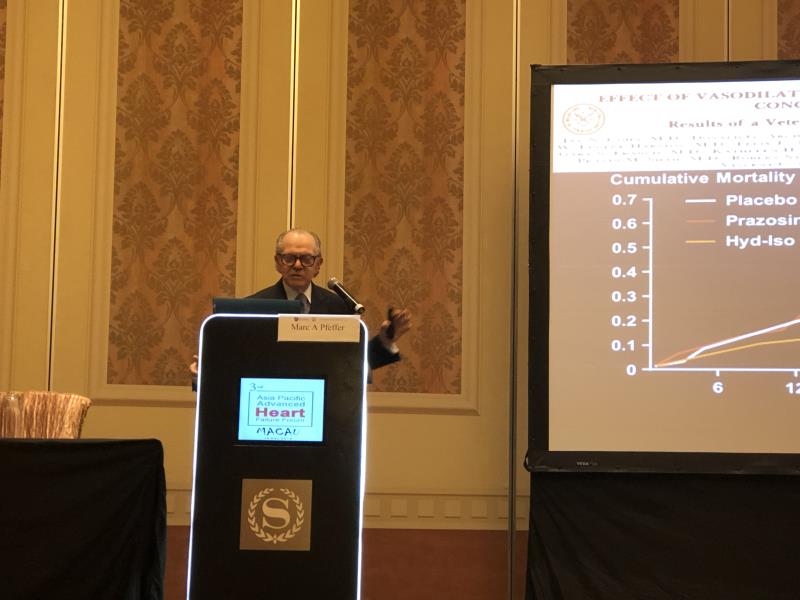
A left ventricular ejection fraction (LVEF) cut-off of 60 percent may identify patients with heart failure (HF) with mid-range or preserved ejection fraction (mrEF or pEF) who could benefit from drug therapy.
“In recent clinical trials in patients with HFmrEF or HFpEF, we have seen benefit of the evaluated therapies until LVEF reaches 60 percent. Therefore, in my opinion, 60 is the new 40 in HF,” said Professor Marc Pfeffer of Harvard Medical School, Boston, Massachusetts, US.
In the PARAGON-HF trial in patients with HFpEF (LVEF ≥45 percent), the angiotensin receptor-neprilysin inhibitor (ARNI) sacubitril/valsartan significantly reduced the risk of the primary composite outcome (total HF hospitalizations and cardiovascular [CV] death) vs valsartan alone in the subgroup of patients with LVEF ≤57 percent (rate ratio [RR], 0.78; 95 percent confidence interval [CI], 0.64 to 0.95), but not in those with LVEF >57 percent (RR, 1.00; 95 percent CI, 0.81 to 1.23). [N Engl J Med 2019;38:1609-1620]
A combined analysis of data from the PARADIGM-HF (LVEF eligibility, ≤40 percent) and PARAGON-HF trials showed that the treatment effect of sacubitril/valsartan vs a renin-angiotensin-system (RAS) inhibitor alone decreased with increasing LVEF. “In terms of the composite outcome of total HF hospitalizations and CV death, no benefit was seen in patents with LVEF ≥60 percent,” noted Pfeffer. [Circulation 2019, doi: 10.1161/CIRCULATIONAHA.119.044586]
“This loss of treatment benefit at LVEF ≥60 percent was also observed in the CHARM trial of candesartan in HFmrEF [LVEF 40–49 percent] and the TOPCAT trial of spironolactone in HFpEF [LVEF ≥45 percent],” he pointed out. [Eur J Heart Fail 2018;20:1230-1239; Eur Heart J 2016;37:455-462]
“These results suggest that for patients with HF with LVEF <60 percent, the benefits of HF therapy would outweigh the risks, costs and inconvenience associated with treatment,” he suggested.
The therapeutic armamentarium for HFpEF may expand as drugs from various classes are being evaluated in large, ongoing clinical trials. For example, sodium-glucose cotransporter-2 (SGLT2) inhibitors and spironolactone are being studied for their effect on HFpEF outcomes. Sacubitril/valsartan is also being evaluated, against individualized medical therapy, for its effect in lowering N-terminal pro-B-type natriuretic peptide (NT-proBNP) and improving exercise capacity and HF symptoms in patients with HFpEF in the PARALLAX trial.
“This is now the most exciting time for HF management,” said Pfeffer.
“In patients with HFpEF, I do use spironolactone because it is inexpensive and significantly reduces HF hospitalizations. An exploratory post-hoc analysis of the TOPCAT trial showed that it significantly reduces CV death and HF hospitalizations in patients from the Americas,” he added. [N Engl J Med 2014;370:1383-1892; Circulation 2015;131:34-42]